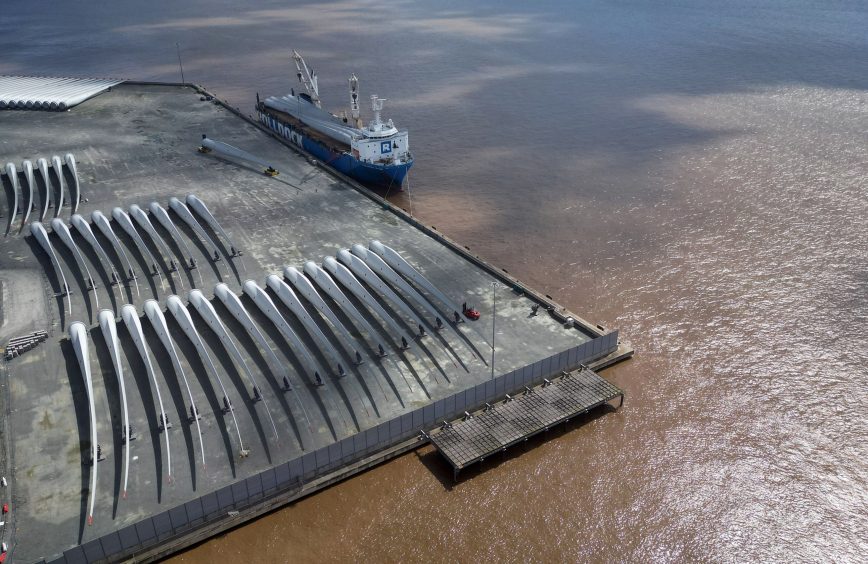
The history of Siemens is the history of electricity. After Werner von Siemens set up shop in a Berlin workshop in 1847, his improved design for the electric telegraph won him the contract to build Europe’s first long-distance cable. His company became an industrial behemoth, making everything from light bulbs to giant turbines for power stations.
The company has morphed many times since, and more recently spawned multiple listed businesses making chips, healthcare screening equipment — and wind turbines. Just like other parts of German industry, one of Siemens’ former units has hit a roadblock as the green energy transition reshapes global business.
In 2017, Siemens, already a major builder of offshore wind turbines, bought Spanish rival Gamesa to create the world’s biggest installer. Then-Chief Executive Officer Joe Kaeser described the move as having a “clear and compelling industrial logic.”
Six years later and the sure-fire bet on surging appetite for carbon-free electricity has turned close to catastrophic. A fault in thousands of wind turbines has left Siemens Energy (ENR:Xetra), spun out of the mothership in 2020, on the hook for a repair bill of at least €1.6 billion ($1.7 billion) alongside an expected €4.5 billion net loss for the year.
With its biggest shareholder Siemens withdrawing support, the gas turbine and grid technology maker was forced to seek a €16 billion backstop from the government, while it’s still working on how to address the faulty turbines.
Investors responded by wiping out more than a third of the company’s value, the second such move this year. The wind turbine disaster is clouding Siemens Energy’s other profitable businesses and the company’s total order backlog of €110 billion. The strain on the business means it now needs help on financial guarantees necessary to win large-scale contracts to build electricity grids or gas turbines.
“Siemens Gamesa is tragic, but not emblematic of the wind industry as a whole,” said Claudia Kemfert, an energy expert at the German Institute of Economic Research in Berlin.
The financial guarantees that Siemens Energy has asked for help with suggest banks have become more reluctant to work with the company and the cost of credit lines backing them has risen, Citigroup said in a note. Economy Minister Robert Habeck said talks have been “good and constructive.”
While the company has reached out to government, the request pales in comparison to Germany’s €33 billion rescue package to bail out gas supplier Uniper last year after Russia shut down deliveries, which the company is now preparing to pay back.
Siemens Energy’s issues partly stem from the malaise in the wind industry and the company isn’t alone in a German industrial landscape that is foundering in the green transition. Volkswagen, at one point professing to drive the world’s biggest rollout of electric cars, has scaled back its ambitions after models flopped. Earlier this year, it lost its decades-long sales lead in China to electric-car maker BYD Co.
The country’s chemicals industry led by BASF is skirting new investments at home after Russia turned off the tap on cheap gas. And Germany’s shift to renewables is bumpy at best. It phased out its last nuclear reactors this year, while reducing a heavy dependence on coal. But the ramp-up of renewable power is lagging far behind the pace necessary to hit a government target of 80% clean power production by 2030.
For Siemens Energy, the issues have steadily ballooned since the Gamesa takeover, which was troubled from the get-go. While Siemens was active in offshore wind power since 2004, it had little experience with onshore turbines. Corporate cultures clashed as the wind industry slid into a difficult phase it’s not yet emerged from amid cut-throat competition.
To combat rivals like Denmark’s Vestas Wind Systems, Siemens Energy rushed out a new onshore wind turbine, the 5.X. This proved disastrous with the device prone to breaking down because major components twist over time. Despite years of work, it still hasn’t gotten to the bottom of the problems, compounded by the industry-wide crisis battling unprofitable contracts and increasing competition from cheaper Chinese products.
In Germany, like other major markets, permitting for new wind parks has been slow. Local resistance and red tape compound the problems, and many suppliers are sitting on loss-making contracts. Danish developer Orsted earlier this month slumped after New York regulators rejected adjustments for contracts on offshore wind farms hit by rising material costs and inflation.
On Thursday, Siemens Energy also indicated performance might again disappoint during the financial year that started this month. Final findings of a broad review of its wind business are still in the making. Whatever the path forward, it’ll be costly with factory closures as well as new turbine designs under consideration, people familiar with the plans have said.
“Even if Siemens Energy has no near-term liquidity issue, the comment around measures to strengthen the balance sheet is broad,” Citigroup analyst Vivek Midha said in a note. “Investor concerns around an equity raise are likely to intensify.”
Recommended for you
